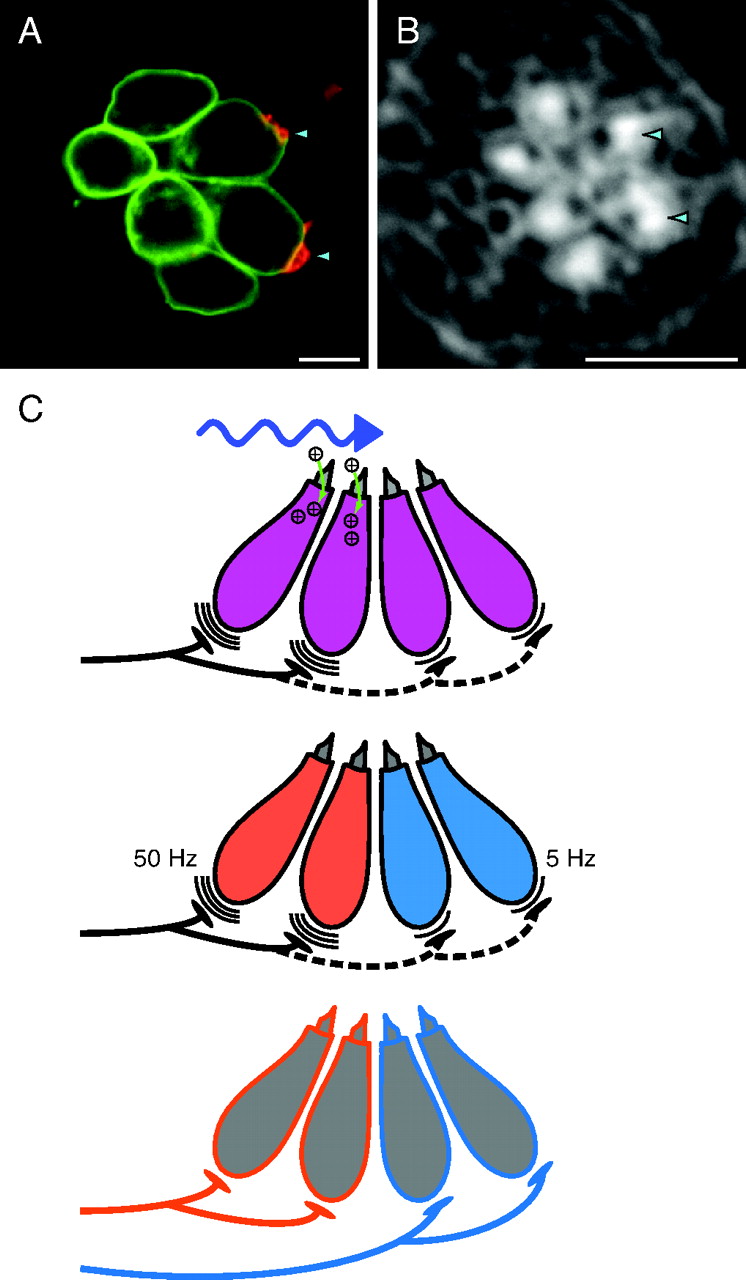Fig. 1 Afferent terminals synapse specifically with hair cells of one orientation. (A) In this anteroposteriorly oriented neuromast of the posterior lateral line in a zebrafish larva at 5 dpf, the axonal terminal of an mCherry-labeled afferent neuron (red) contacts two of the six hair cells marked by GFP (green). Each site of innervation is marked by an arrowhead oriented in the direction of the associated hair cell′s direction of excitatory stimulation. (B) Staining of the same neuromast with fluorescent phalloidin reveals the hair-bundle polarities: the unlabeled kinocilia appear as dark notches in the bright, actin-rich cuticular plates. The two labeled terminals contact hair cells sensitive to anteriorly directed stimuli. Arrowheads mark the hair bundles corresponding to the innervated somata in the two previous panels. In this and all subsequent morphological illustrations, the same labeling convention applies; anterior is to the left and dorsal to the top. The same labeling reagents are used in Figs. 2 and 3. (All scale bars, 5 μm.) (C) Three models might explain the ability of afferent neurons to distinguish between hair-cell polarities. (Top) A posteriorly directed stimulus depolarizes posteriorly polarized hair cells while hyperpolarizing anteriorly polarized cells. Afferents might form synapses diffusely but, after detecting temporal differences in synaptic release from oppositely polarized hair cells, eliminate synapses with hair cells firing out of phase with the rest of their synaptic repertoire (dashed neuronal segment). (Middle) Oppositely polarized hair cells express different complements of ion channels that produce distinct patterns of spontaneous synaptic release. In this example, hair cells of the two orientations release neurotransmitter at different frequencies, allowing neurites to distinguish them. (Bottom) Hair cells express distinct membrane-bound or secreted proteins that attract prepatterned afferents with intrinsic affinities for particular molecular markers. The afferents then detect hair-cell polarities independently of synaptic activity.
Image
Figure Caption
Acknowledgments
This image is the copyrighted work of the attributed author or publisher, and
ZFIN has permission only to display this image to its users.
Additional permissions should be obtained from the applicable author or publisher of the image.
Full text @ Proc. Natl. Acad. Sci. USA

